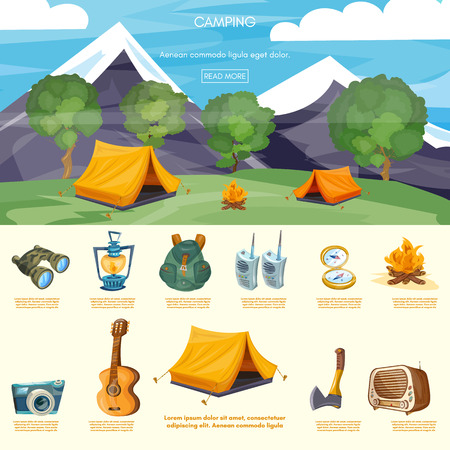Maintain And Operate Your Company By Selling Camping Tents
Maintain And Operate Your Company By Selling Camping Tents
Blog Article
How to Appropriately Set Up Your Outdoor Tents Before Camping
Establishing your tent can be a daunting job for also knowledgeable campers. This overview will cover the essentials of pitching an outdoor tents effectively and safely so you can enjoy your camping journey without stress and anxiety or worry.
How do you store a tent for winter?
Begin by laying out your outdoor tents's impact and ground sheet to protect your outdoor tents floor from rocks, sticks, dust, and other particles. Next off, put together the tent poles and attach them to the edges of the tent body making use of the ideal sleeve or hook.
Picking the Right Website
When you are worn down after a lengthy day hiking, you intend to pitch your camping tent and get ready to rest. But you should initially walk around the website to see to it it is risk-free for outdoor camping. Look down and approximately learn whether any trees have huge dead branches that could fall on your outdoor tents. These are in some cases called widowmakers and you do not desire them to go down on you while you're resting.
Also be sure to stay clear of reduced areas that might flood throughout a storm and to camp away from pet tracks, nests and habitats where ticks and chiggers are more than likely to prosper. Look for a flat, rock-free spot that allows enough for your tent and any other equipment you'll be bringing.
Some people like to set their outdoors tents up so the head end is sharp towards the east to capture the sunlight's warming rays first thing in the morning. This isn't always needed, yet it is a good touch that can assist wake you up.
Pitching Tips
It might seem apparent, yet proper tent pitching is among one of the most vital factors in a good night's rest. Having a practice run in the house will certainly help you familiarize yourself with your camping tent, discover all the post sleeves and bolts, and see to it every little thing is in place. It's also a good time to practice utilizing guylines for security and to uncover any kind of busted items.
When you get to your camping site, examine the terrain to see if it's suitable for your tent. A good rule of thumb is to pitch the camping tent on a flat, level area with a minor downhill angle. This will certainly allow rain to drain away from the tent instead of pooling in front of it.
If you can't discover a level area, think about putting a tarpaulin or various other groundsheet under your outdoor tents footprint to protect it from moisture. This can likewise aid keep dirt out of the tent.
Using Guylines Effectively
Using guy lines effectively is essential to making sure your tent or hammock stays secure in high winds and various other negative weather conditions. A guy line is a rope or cable that affixes to the ground via loopholes and D-rings in the structure, tarp, or rainfly.
Start by securing one end of the line to a guyout loophole on your outdoor tents or rainfall fly, or to the pole it's attached to. After that loophole the other end of the line over a stake placed faraway from the framework and tighten it.
Maintaining your shelter's guy lines taut will prevent sagging or sagging throughout windy conditions, stopping moisture from permeating into the tent or damages to the framework and improving comfort and safety during camping. Constantly examine the stress of your person lines throughout and after negative weather to ensure they stay secure. Furthermore, take into consideration loading an individual line tensioner to conveniently change and maintain the appropriate amount of stress in your lines.
Removing the Camping tent
When working out into your camping site, locate an area with a flat area and clear it of rocks and particles. Likewise, make sure to lay down an outdoor tents impact or tarp slightly smaller than your outdoor tents body to stop water pooling. This helps keep your outdoor tents completely dry permanent tents from rain or condensation and can be especially helpful in gusty locations.
Examine your equipment, consisting of the tent things sacks to make certain nothing is missing out on. Inspect that the poles match their clips and restock first-aid items if needed.
When it's time to pitch your tent, begin by orienting the doors downwind, and stake down each corner of the tent. If the ground is loose or sandy, consider spreading a tarp under your outdoor tents to secure it from wind and decrease the chance of your camping tent tipping over. Likewise, be sure to make use of guylines successfully to restrain your rainfly and keep it tight. A well-pitched camping tent can protect against leaking, condensation, and sunlight damages.
Is it possible to live in a tent?
